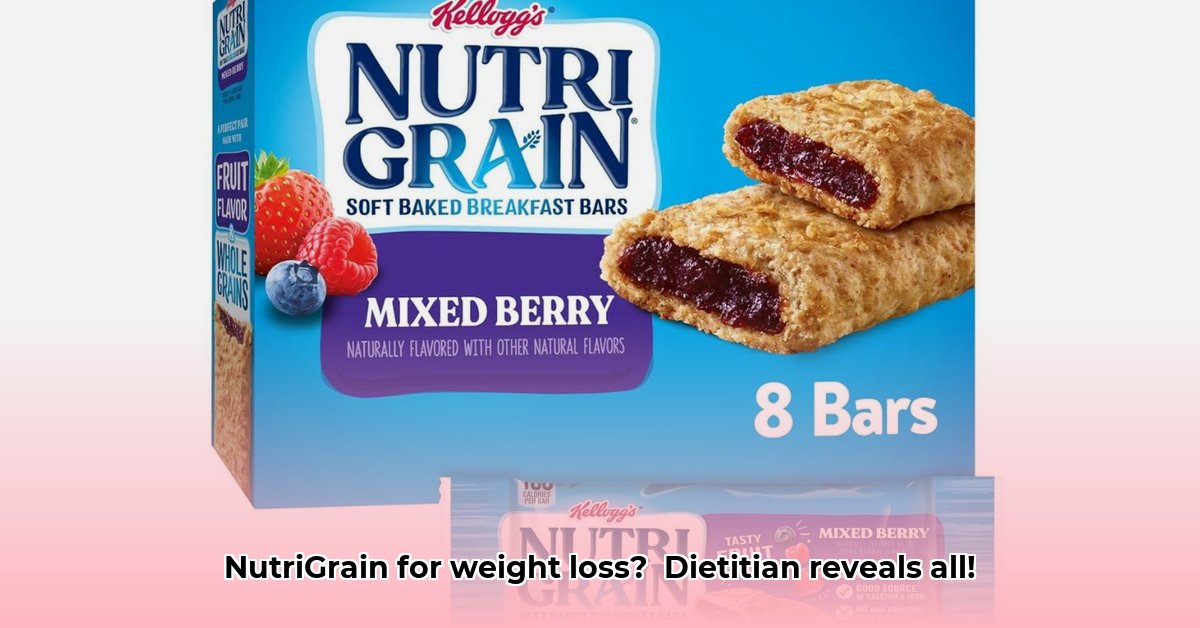
Nutritional Breakdown: A Critical Analysis
Nutri-Grain bars market themselves as a convenient and healthy snack, often highlighting their whole-grain content. However, a closer examination of their nutritional profile reveals a less favorable picture for weight loss. A typical bar contains approximately 11-12 grams of added sugar – equivalent to roughly two and a half teaspoons of table sugar. This high sugar content significantly overshadows the relatively low levels of protein (around 2 grams) and fiber (1-3 grams, depending on the flavor). This imbalance presents a substantial challenge for anyone aiming to lose weight.
Why is this concerning? High sugar intake leads to rapid spikes in blood glucose levels, triggering a surge in insulin. This process promotes fat storage and can leave you feeling hungry and craving more food shortly after consumption—a scenario hardly conducive to weight management. The low protein and fiber content further exacerbates this issue, as these nutrients are crucial for promoting satiety (feeling full). A lack of these key components means you're more likely to experience hunger pangs and consume extra calories later in the day.
Impact on Weight Loss: Sugar's Detrimental Effects
The high sugar, low protein, low fiber composition of Nutri-Grain bars directly contradicts the principles of effective weight management. The rapid rise and fall of blood sugar levels following consumption can disrupt appetite regulation, leading to increased calorie intake. Furthermore, the lack of protein and fiber—essential for sustained satiety—contributes to feelings of hunger and a greater likelihood of overeating. Essentially, a Nutri-Grain bar might provide a temporary energy boost, but this is followed by a crash, leaving you feeling unsatisfied and craving further calories. This pattern makes it difficult to maintain a calorie deficit, which is the cornerstone of successful weight loss.
Healthier Alternatives: Superior Snacking Choices
Numerous healthier snack bar alternatives offer a more balanced nutritional profile, better supporting weight-loss goals. These typically contain higher levels of protein and fiber, promoting sustained satiety and minimizing blood sugar fluctuations. Consider these examples:
| Snack Bar | Protein (grams) | Fiber (grams) | Added Sugar (grams) |
|---|---|---|---|
| RXBAR | 12 | 5 | 3 |
| KIND Bar (various types) | 5-10 | 4-8 | Varies greatly |
| GoMacro MacroBar | 10 | 6 | 5 |
These options generally provide significantly more protein and fiber, while considerably reducing added sugar. Such a profile is much more conducive to maintaining a feeling of fullness and preventing unwanted calorie consumption.
Consumer Considerations: Portion Control and Mindful Snacking
Even if you choose to include Nutri-Grain bars sparingly in your diet, practicing portion control and mindful snacking is essential.
1. Portion Control: Limit yourself to one bar per serving. Avoid overconsumption, which negates any potential benefits.
2. Mindful Eating: Before reaching for a snack, ask yourself if you are truly hungry or influenced by other factors like stress or boredom. This step prevents unnecessary calorie intake.
3. Nutritional Enhancement: Complementing a Nutri-Grain bar with a source of protein and healthy fats, like a handful of almonds or Greek yogurt, can improve satiety and help regulate blood glucose levels.
Conclusion: Strategic Snack Choices for Weight Loss Success
While Nutri-Grain bars offer convenience, their nutritional profile is far from optimal for weight loss. The high sugar content and low protein/fiber ratio can hinder efforts to maintain a calorie deficit and promote sustained satiety. By prioritizing healthier, protein- and fiber-rich alternatives and implementing mindful eating strategies, you can significantly improve your chances of achieving sustainable weight loss. Remember, lasting weight management hinges on consistent, informed choices, making strategic snack selection an integral part of the process.